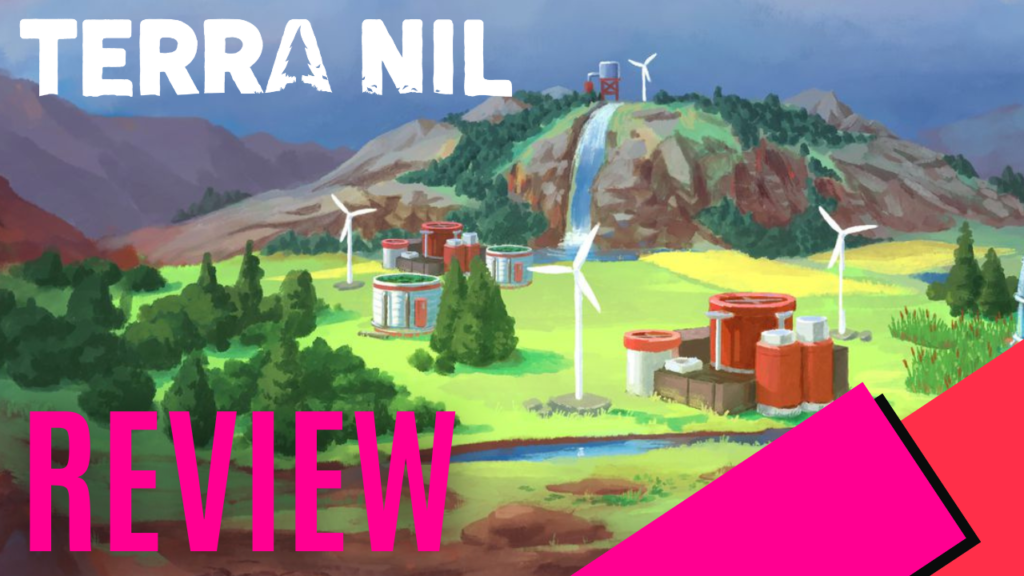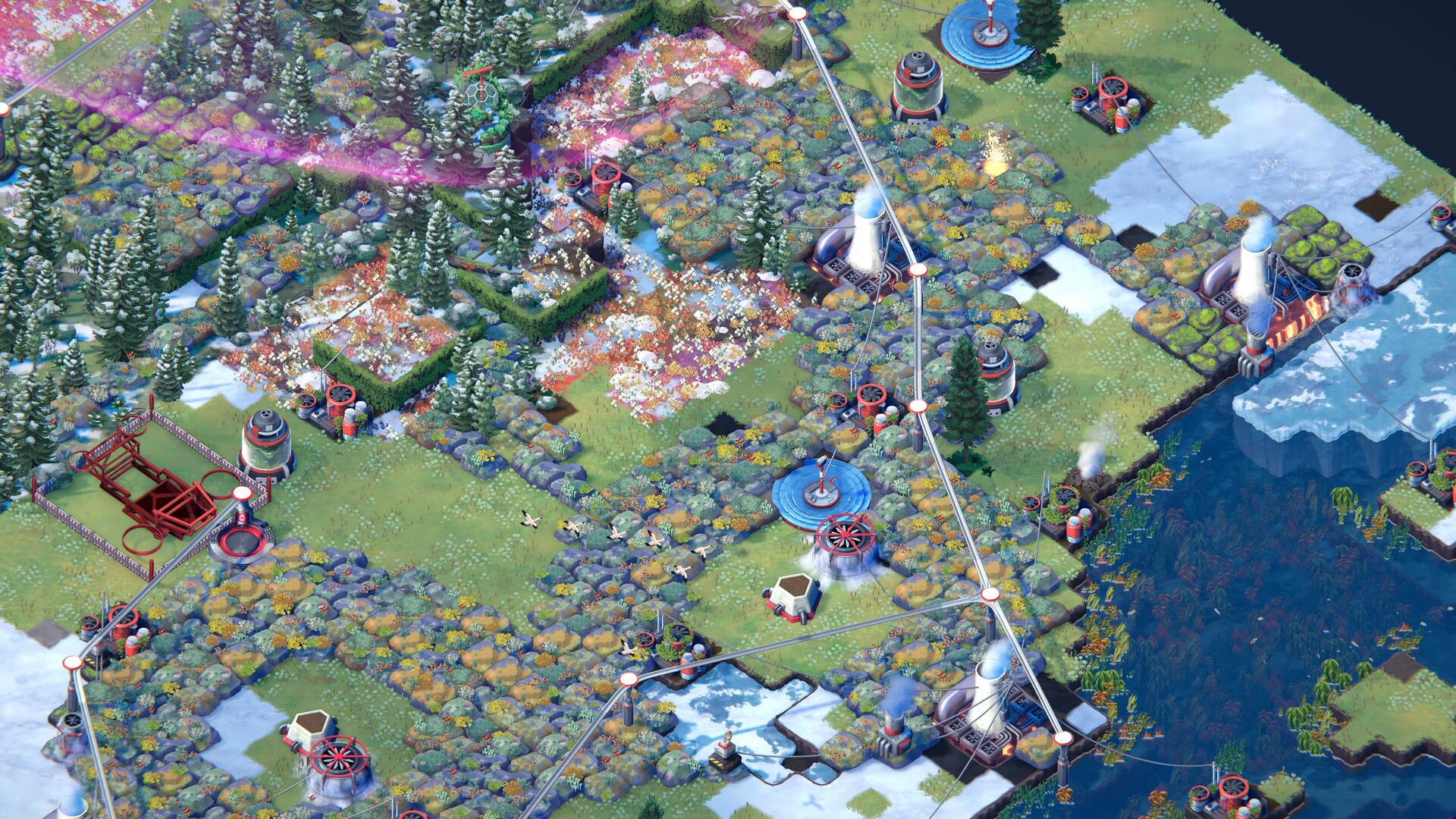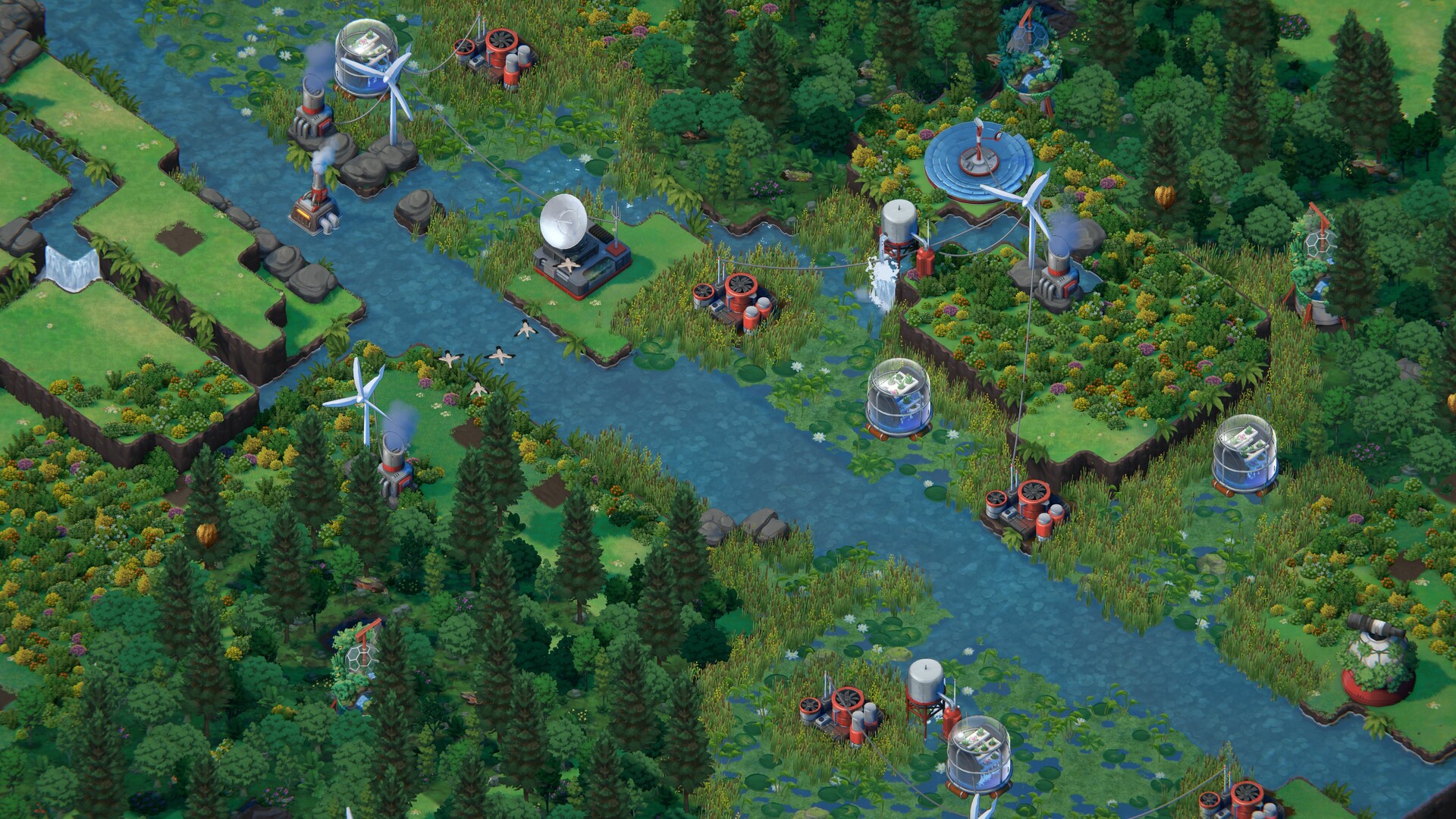
Industrial development is humanity’s way forward and there’s an abundance of city-builder games about it, but there aren’t many that focus on nature until Terra Nil. The last thing I expected from the creators of Broforce and a game about jousting with certain appendages was a game about rebuilding ecosystems, but now it’s a reality.
Developed by Free Lives and published by Devolver Digital, Terra Nil asks how we can rebuild the natural world after its destruction by using man-made technology in an unexpected way.
As per most city builders, you start with nothing but empty and barren wastelands devoid of life. For now. Building irrigators and turbines begin to progressively bring life into the land, with lush green fields and blue rivers.
Restoring balance to biomes is crucial to success, so it’s important to efficiently manage resources to bring the region back to life. Strategically using supplies to bring back plants and wildlife then packing up and leaving behind spaces seemingly untouched by our ecological footprint.

With a top-down isometric view and subtle pixelation, there’s a charm to Terra Nil that is endearing and extremely satisfying to look at, as well as be a part of. Uninhabitable lands are dull until fields are cultivated, and then flowers bloom and wildlife populates each type of zone.
Finding the sweet spot between climates of grasslands, swamps, and forests, and drawing in wildlife are goals that bring it all together. It isn’t until all the structures are recycled and the airship sets off that you’re really given a chance to bask in your creation, which feels completely different from the typical top-down builders I’ve become accustomed to.
Initially, I found there was a slight learning curve to overcome in learning how to manage resources. Instead of money, the funds are leaves, which can be used to make structures and are gathered through restoration.
Thankfully, Terra Nil takes a gentle approach to guidance that emphasises growth through trial and error. I didn’t mind starting again if resources became scarce. Starting from scratch helped me understand how to use what I had more effectively.

New tools are introduced gradually, and access to the beautiful sketchbook-style manual provides plenty of tips. For a relaxing process, there’s the Zen mode, but for budding ecologists and Gardeners, there’s the standard mode. Then there are the Ecologist and Environmental Engineer modes, with fewer resources and guidance, which is the true test of sustainability.
Audio design in the game is a pure ASMR fantasy of birds, winds, and streams, drawing into one big soundscape that’s perfect to unwind with. The music is orchestral but gentle enough that it doesn’t take away from the ambience, and instead, works alongside it. The combination of the visuals and audio work harmoniously to create an all-around stress-free experience.
A standard playthrough takes roughly 5-6 hours, with around 30 minutes to an hour per region, but quite a while more counting the additional challenges. The four regions represent different biomes: A River Valley, a Desolate Island, a Volcanic Glacier, and a Flooded City, all requiring different levels of climate control and varied approaches to agriculture. Creating a thriving tropical island and restoring the irradiated city were highlights of my efforts.

Terra Nil approaches the struggles facing the natural world in a way that doesn’t feel uncomfortable and instead delivers an alternative way of looking at the situation. A wholesome look into conservation made me feel hopeful rather than fearful of the future.
It’s a lesson in working with what we have and taking advantage of what technologies we’ve created for the good of the planet. Terra Nil is the perfect antidote to a stressful day while having something incredibly important to say.
A portion of each purchase of Terra Nil will be donated to the Endangered Wildlife Trust, a non-profit organization seeking to reduce the impact of human consumption and restore wildlife and habitats. Not only can you save the world in-game but you can play a part in becoming a real-world part of the solution. That’s really something to enjoy.

The Good
- Impactful gameplay experience
- Beautiful music and visuals
- Balanced strategy and resource management
- Various difficulties and additional modes
The Bad
- The main game is relatively short
- Niche type of players








